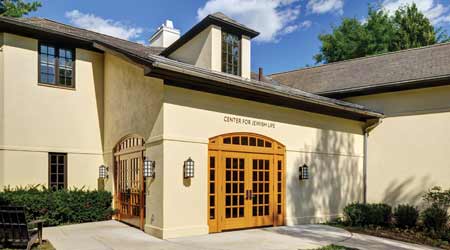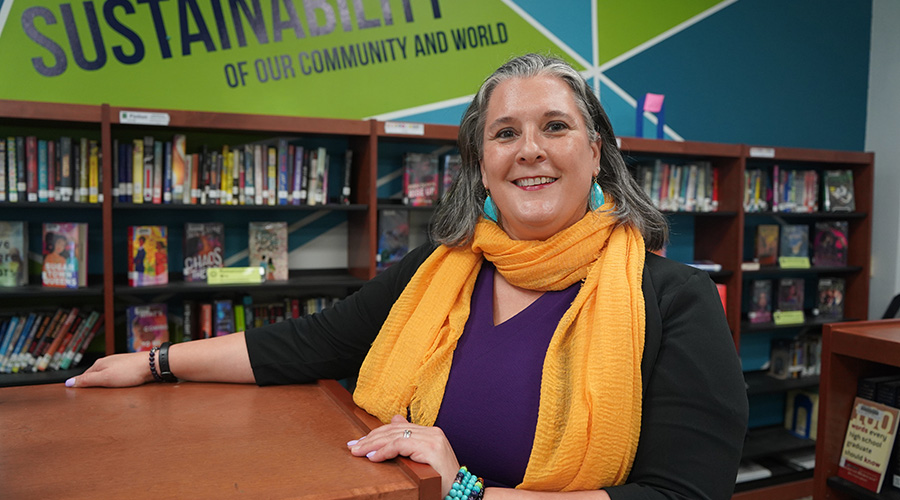 The renovation of the facility housing the Princeton University Center for Jewish Life included upgrades to mechanical systems and building envelope to contribute to the project’s long-term resilience and energy efficiency.Photo by Michael Slack, courtesy JZA+D
The renovation of the facility housing the Princeton University Center for Jewish Life included upgrades to mechanical systems and building envelope to contribute to the project’s long-term resilience and energy efficiency.Photo by Michael Slack, courtesy JZA+DColleges Build Toward More Resilient Campuses
Colleges are leading the charge on resilience strategies. Here is the current state of the art.
A growing number of colleges and universities are wrangling with questions about their own resilience. Administrators and facilities teams with relevant experience understand that resilience is not a synonym for “emergency preparedness.” The National Infrastructure Advisory Council calls resiliency “[the] ability to anticipate, absorb, adapt to, and/or rapidly recover from a potentially disruptive event.” Viewed through this lens, the optimally resilient campus would continue functioning with minimal disruption to academic or economic activity or would recover quickly to restore services and normal operations.
While facility managers for coastal colleges may most fear the effects of increased stormwater and potential flooding, they are well-advised to consider a holistic, integrated campus plan that addresses rapid deployment of adequate backup power, reinforcement of building facades, and potential dehumidification failures that could lead to mold, among other things.
Colleges and universities exploring the best approaches can avail themselves of the findings of cities and municipalities that developed comprehensive sustainability and resilience plans in recent years. They should consult with architects, landscape architects, and planners, all of whom can assist multi-disciplinary teams and stakeholders to visualize the complex relationships among infrastructure, buildings, landscape, policy, and economy. With some forethought, creativity, innovative planning, and building know-how, schools can utilize design principles to achieve cost-effective and lasting solutions for both new and existing facilities.
Master planning
To be clear, many higher education institutions are leading on resilience efforts. Several major universities, including Harvard and the University of Texas, have substantial programs devoted to research through their programs in design, landscape architecture, and urban planning. These programs are often outward-facing, however, intending results and discoveries to be applied to outside communities.
Ultimately, each institution must engage in a revamp of its own campus master plan. Effective integrated solutions for campus resilience start with the master plan. The institution needs guidelines, proposals, and recommendations in place to ensure that changes to facilities and land use are in harmony with the needs of the population. The effective master plan provides these by drawing on public input, institutional goals, existing development, transportation, and the physical characteristics of the campus, analyzing and addressing these factors in the most relevant context.
In recent years, hundreds of universities and colleges have revised their master plans with economic and environmental sustainability as overarching goals and many have undertaken resilience in a parallel effort. Sustainability and resilience are often discussed in tandem because goals and methods typically dovetail. Experts recommend pursuing both goals simultaneously to leverage synergies between the two, which is best accomplished in the master planning process.
According to Lona Rerick, associate principal with ZGF Architects, passive strategies best represent this synergy. She notes that “passive, non-mechanical solutions that work with the particular location and climate of the building” can make a building more resilient both to changes in energy prices as well as disasters that cut off utility power for extended periods of time.
Rerick cites daylighting and natural ventilation systems (e.g., operable windows) as examples of cost-effective passive energy strategies; passive water strategies like bioswales can contribute to flood mitigation and reductions in water usage. Resilience upgrades that aggressively employ passive strategies will come with higher upfront costs, but as Rerick notes, reliance on traditional mechanical systems brings higher costs associated with maintenance, operations, and replacement.
Related Topics:














